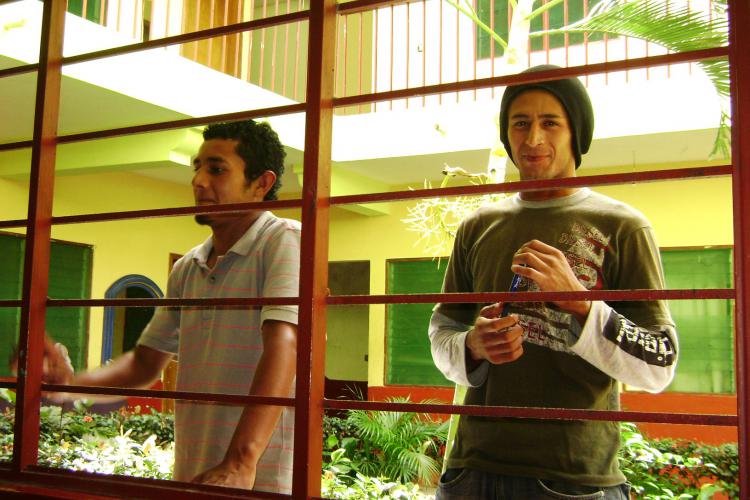Confronting Violence and Border Control along the Ecuador-Mexico-US Zone of Transit
Posted:
Time to read:
Guest post by Soledad Álvarez Velasco, PhD candidate, Department of Geography, King’s College London. This post is the final installment of the Border Criminologies Themed Blog Series on the Industry of Illegality organised by Ruben Andersson.
Targeting migrants has entailed among other mechanisms the externalization of US and European borders and the configuration of border zones or ‘zones of transit.’ These zones are spaces of dispute produced by conflictive relations of power between multiple actors who permanently operate in between legality and illegality, interconnecting countries in unforeseen ways due to the permanent movement of commodities and labour power through clandestine and formal ways.

The Ecuador-Mexico-US corridor, which I focus on in my research, clearly illustrates this transit-zone phenomenon. As barriers of entry to the US through legal pathways have become greater, clandestine routes have thrived, and Mexico has long played a key role in this process. Its proximity to the US―the world’s principal consumer of drugs and a leading migration destination―has converted Mexican territory into a space crossed by clandestine routes used by drug cartels and networks for smuggling migrants. Mexico is a preliminary border―or a US extended border zone―used for controlling and detaining migrants from Central and South America, as illustrated by the punitive crackdowns rolled out since last year’s ‘border crisis.’
Moving further south, the spatial articulation between Ecuador and the Mexico-US transit zone is not a novelty. Since at least the late 1960s, pioneering Ecuadorean migrants, as a way of responding to socio-economic and political crises, have been transiting through the Mexico-US corridor hand-in-hand with smugglers or coyotes. More recently, Ecuador’s dollarized economy and open migratory policy has encouraged the arrival of migrants from Africa, Asia, South America, and the Caribbean into the country, with the aim of departing towards the US. Ecuador has in this way turned into a sort of global springboard to reach the US via Mexico.
Some 5,000 kilometers separate Ecuador from the US. If a migrant wants to cover such a distance, he or she is compelled to hire the services of coyotes. For at least the past five decades, coyotes have defined routes, configured strategies, and accumulated knowledge to enable clandestine crossings that challenge the securitization regime along the Mexico-US corridor (see, for example, a recent blog post by Gabriella Sanchez on this topic). At present there are several routes which vary in cost, duration, and level of exposure to multifarious forms of violence. In all cases, coyotes guarantee three attempts of crossing. One option is the air route: departing from Ecuador towards a Central American country. From there, travelling via land and river crossings in different means of transport, migrants may traverse Mexico’s southern border as well as the whole Mexican territory and its northern border. The cost of this route varies between US$10,000 and US$15,000, and its duration fluctuates from three weeks to two months.
Another option is the maritime route. This is the most popular route because is the cheapest―but it’s also the most dangerous. Those who embark on this route set sail on a fishing boat from Ecuadorean coasts, cross the Pacific Ocean to Guatemala and from there continue by land towards the north. Traversing the Pacific may take two to four weeks, while crossing Mexico’s southern and northern borders might take up to a month. The price ranges between US$8,000 and US$10,000, and may include: forged documents; means of transport; hotel accommodation, shelters, or clandestine camps; and even the money required to bribe migration authorities.

Techniques of smuggling migrants from Ecuador to the US reflect new forms of organisation in which family and community networks based in Ecuador work for complex structures, such as drug cartels, in Mexico or the US. This process entails confronting multifarious forms of state and social violence, and illustrates the broader trend at the borders: insofar as more controls are deployed, more ‘illegal’ patterns for crossing borders are developed. Accordingly, routes of transit have been confined to marginalised, rural, and highly violent sites. The forms of violence exerted against migrants on the move―besides accidents on boats, trucks, and/or trains―include robbery, extortion, discrimination, exploitation, kidnappings, trafficking, torture, rape, drownings, disappearances, and murders. These forms of violence are perpetrated, with varying degrees of intensity, in diverse ways and at different stages of the transit by state agents, smugglers, local inhabitants, and/or members of drug cartels or gangs. Most cases of violence go unpunished since often no responsible person is identified, and thus no action is taken.
The Ecuador-Mexico-US zone of transit is a highly complex space that ought to be conceived as a product of global capitalism, in that it satisfies demand for labour power while at the same time constituting a globalized space for the securitization of mobility. This zone is defined by violence, impunity, and the operation of ‘illegalisms,’ whether of a smuggling or official kind, as well as by migrants on the move who respond in multiple ways to the dangers of the borderlands.
Any comments about this post? Get in touch with us! Send us an email, or post a comment here or on Facebook. You can also tweet us.
__________
How to cite this blog post (Harvard style):
Álvarez Velasco, S. (2015) Confronting Violence and Border Control along the Ecuador-Mexico-US Zone of Transit. Available at: https://www.law.ox.ac.uk/research-subject-groups/centre-criminology/centreborder-criminologies/blog/2015/10/confronting (Accessed [date]).
Share:








